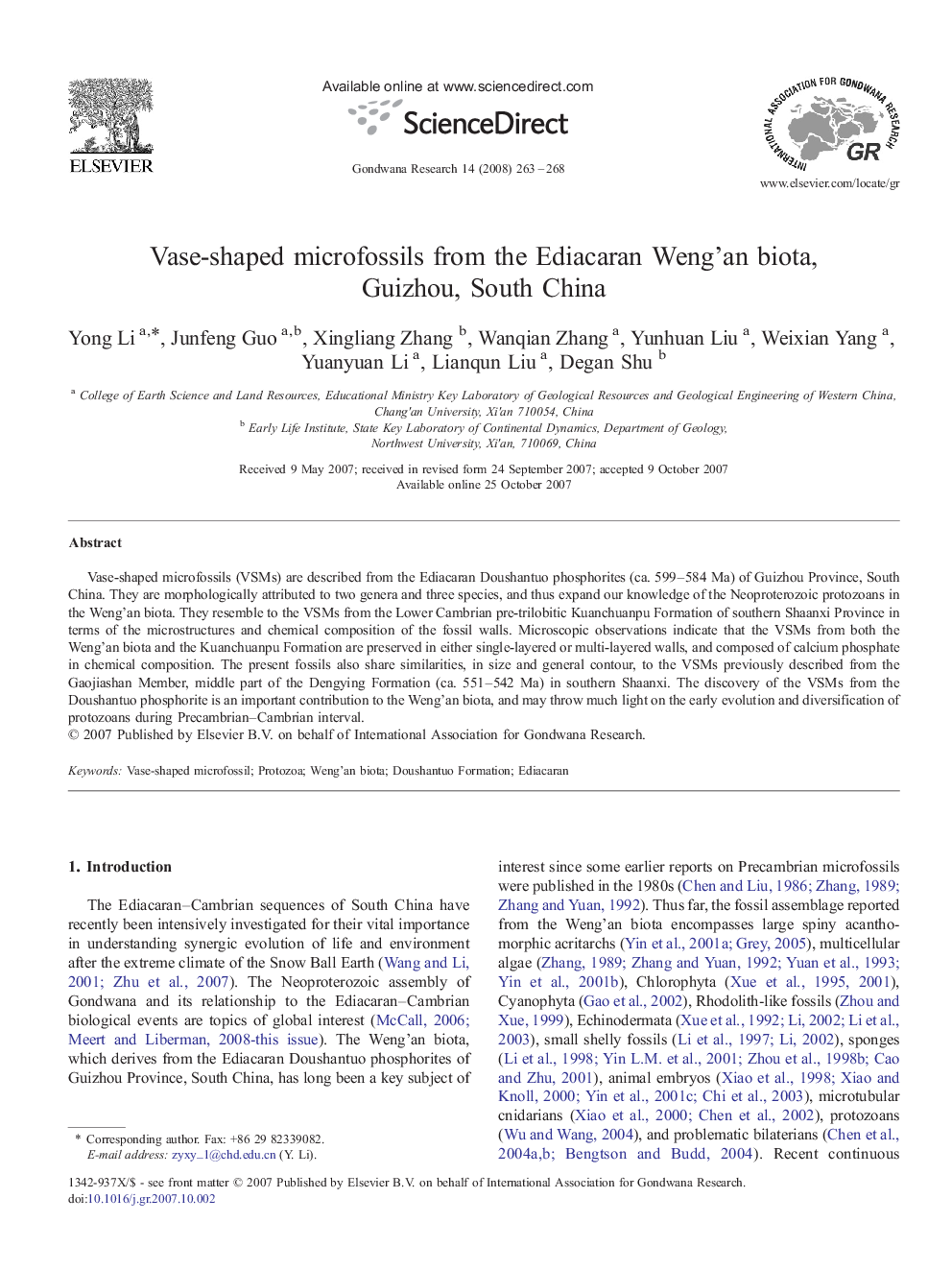| کد مقاله | کد نشریه | سال انتشار | مقاله انگلیسی | نسخه تمام متن |
|---|---|---|---|---|
| 4727959 | 1640152 | 2008 | 6 صفحه PDF | دانلود رایگان |

Vase-shaped microfossils (VSMs) are described from the Ediacaran Doushantuo phosphorites (ca. 599–584 Ma) of Guizhou Province, South China. They are morphologically attributed to two genera and three species, and thus expand our knowledge of the Neoproterozoic protozoans in the Weng'an biota. They resemble to the VSMs from the Lower Cambrian pre-trilobitic Kuanchuanpu Formation of southern Shaanxi Province in terms of the microstructures and chemical composition of the fossil walls. Microscopic observations indicate that the VSMs from both the Weng'an biota and the Kuanchuanpu Formation are preserved in either single-layered or multi-layered walls, and composed of calcium phosphate in chemical composition. The present fossils also share similarities, in size and general contour, to the VSMs previously described from the Gaojiashan Member, middle part of the Dengying Formation (ca. 551–542 Ma) in southern Shaanxi. The discovery of the VSMs from the Doushantuo phosphorite is an important contribution to the Weng'an biota, and may throw much light on the early evolution and diversification of protozoans during Precambrian–Cambrian interval.
Journal: Gondwana Research - Volume 14, Issues 1–2, August 2008, Pages 263–268